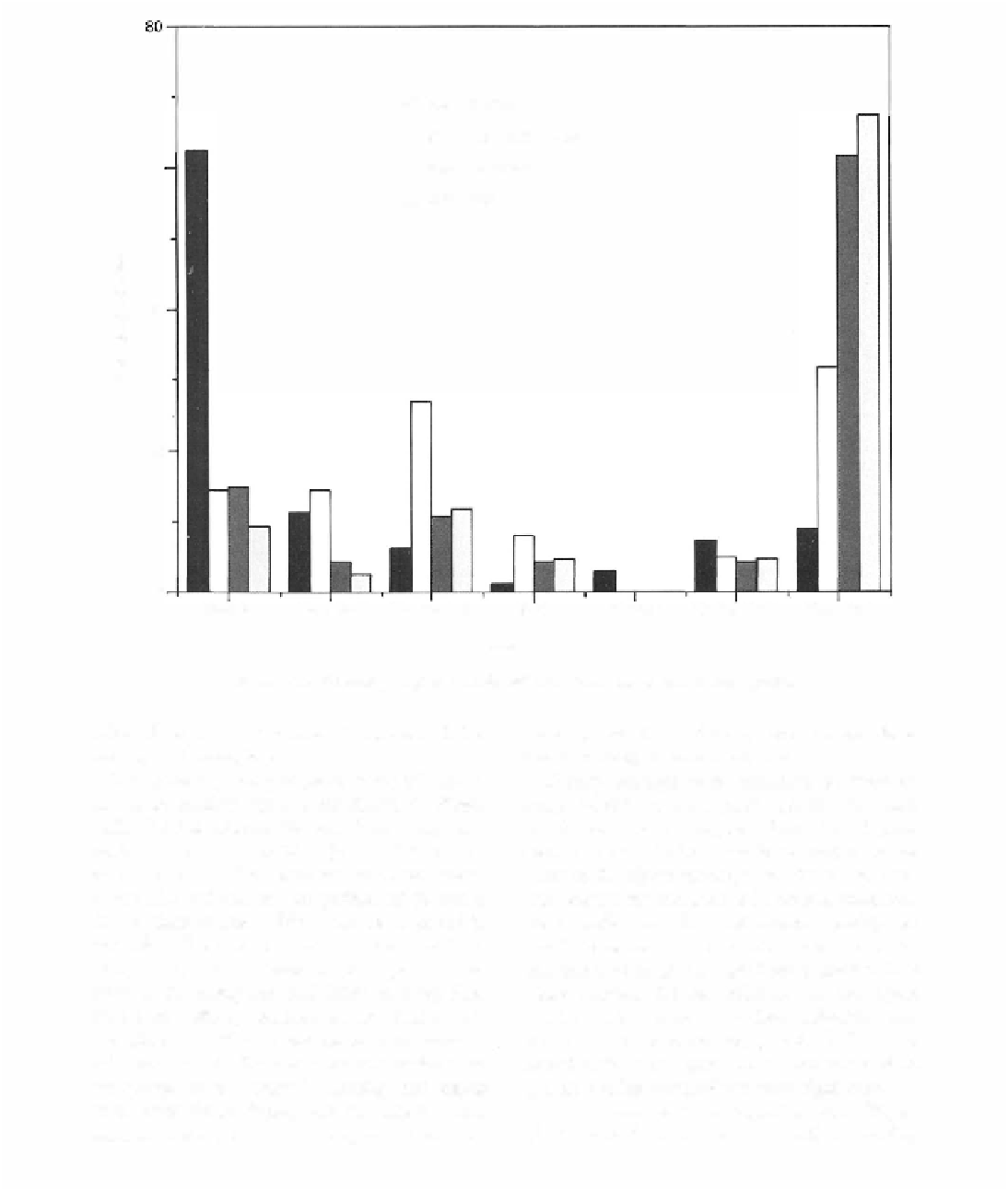Geology Reference
In-Depth Information
•
Red colobus
0
Black-and-white colobus
•
Sykes monkey
60
0
Mangabey
'
.�
O
-
0
40
'
:
)
)
..
)
.
20
0
Petiole
New leaf
Mature leaf
Bud
Flower
Unripe Fruit
Ripe Fruit
Plant item
Figure
13.2.
Percentage of plant parts (items) found in the diet of each monkey species.
followed by the black-and-white colobus, Sykes
monkey and mangabey.
The specific plant part preferences of each of
the forest monkey species are shown in Figure
13.2. The red colobus diet contained a high pro-
porion of mature peioles (only 1.0% of the
petioles shown in the figure are from new leaves).
In fact, the red colobus ate petioles of 35 out of
the 45 plant species (78%) that we recorded in
their diet. The black-and-white colobus diet was
fairly generalised in terms of plant parts eaten,
whereas the mangabey and Sykes monkey diets
were both quite specialised, on ripe fruits. Both
mangabeys and Sykes monkeys were observed to
eat insects as well. On a number of occasions, the
mangabeys were observed catching and eaing
crabs from rivers throughout the forest. Their
preference for crabs also was apparent from their
faecal composiion, which on occasion consisted
almost enirely of crab carapaces.
Dietary overlaps were examined between all
study species at both plant species and plant
par/species levels (Figure
13.3).
The highest
overlap in plant food species (solid bars) occurred
between the Sykes monkeys and the mangabeys,
and between the red and the black-and-white col-
obus. Differences in plant species overlap per
month between the red colobus and the black-
and-white colobus was significantly greater than
those between the red colobus and the Sykes
monkey and between the black-and-white col-
obus and the Sykes monkey (P < 0.05, Wilcoxon
signed-rank test; Figure 13.3). No other plant
species overlap comparisons were significant.
Dietary overlap in par/plant species (Figure
13.3) among the mangabey and the Sykes monkey

Search WWH ::

Custom Search